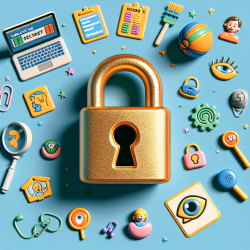The Shocking Truth About Lab Safety: What Every Educator Needs to Know!
In the realm of academic research, safety in laboratories is a critical concern. However, despite the implementation of Environmental, Health, and Safety (EHS) management systems, ensuring compliance remains a persistent challenge. Recent research titled "Rank Has Its Privileges: Explaining Why Laboratory Safety Is a Persistent Challenge" delves into the factors influencing non-compliance in research settings, offering insights that can be pivotal for educators and practitioners in improving lab safety.
Understanding the Research Findings
The study conducted by Basbug, Cavicchi, and Silbey (2022) explores the role of power and status in regulatory compliance within academic laboratories. By analyzing safety inspection data from a large university, the researchers identified that higher-status actors, such as tenured professors and well-funded principal investigators (PIs), often disengage from regulatory systems. This disengagement is manifested in three forms:
- Deny: Ignoring the relevance of safety regulations.
- Dispute: Challenging the validity of inspection findings.
- Delegate: Shifting responsibility to subordinates without adequate oversight.
These behaviors are rooted in the power dynamics within the academic hierarchy, where high-status individuals may feel insulated from the consequences of non-compliance. The study highlights that labs led by tenured PIs or those managing larger research funds are more likely to have higher rates of EHS violations.
Implications for Educators and Practitioners
For educators and practitioners, these findings underscore the importance of addressing power imbalances and fostering a culture of accountability in academic settings. Here are some actionable steps to enhance lab safety compliance:
- Promote Awareness: Educate all lab members about the importance of EHS regulations and the potential consequences of non-compliance.
- Encourage Engagement: Foster an environment where high-status actors actively participate in safety protocols and inspections.
- Implement Peer Review Systems: Introduce peer-led safety audits to ensure unbiased evaluations and encourage mutual accountability.
- Provide Training: Regularly update training programs to include the latest safety standards and encourage hands-on learning experiences.
Conclusion
Improving lab safety requires a concerted effort to address the underlying power dynamics that contribute to non-compliance. By implementing the insights from this research, educators and practitioners can create safer research environments and promote a culture of responsibility and ethical conduct.
To read the original research paper, please follow this link: Rank Has Its Privileges: Explaining Why Laboratory Safety Is a Persistent Challenge.










